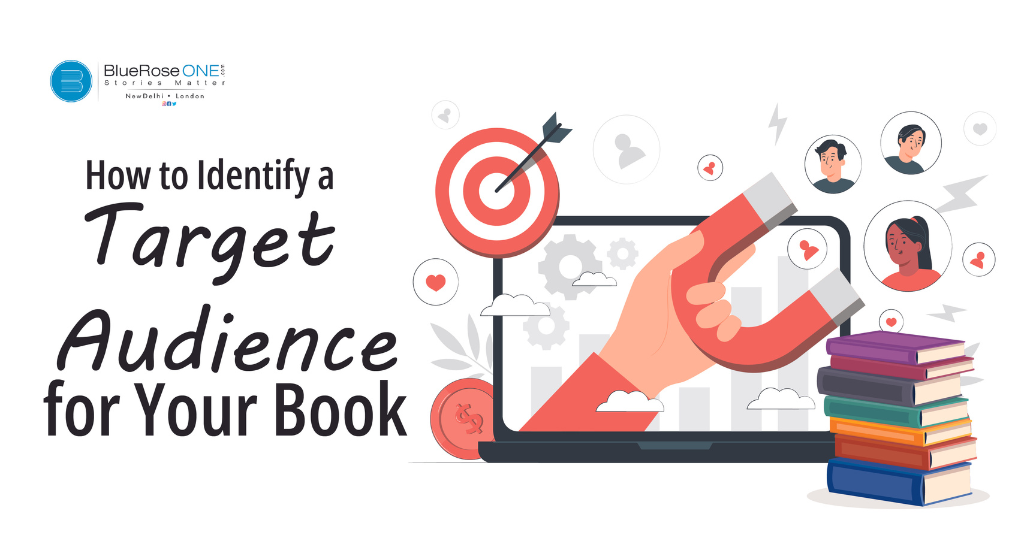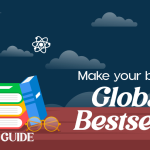Writing a book is an exhilarating journey, but its success often hinges on understanding and connecting with your audience. Identifying a target audience is a fundamental step that can shape your writing, marketing strategies, and overall success as an author. In this comprehensive guide, we’ll explore simple yet effective ways to pinpoint your target audience and tailor your book to meet their needs.
1. Define your book's genre and category.
Defining your book’s genre and category is akin to setting the stage for a performance. It provides the essential backdrop against which your narrative unfolds. Genres, such as mystery, romance, self-help, or science fiction, act as beacons, attracting specific audience archetypes. For instance, consider a science fiction novel. Readers drawn to this genre likely appreciate speculative fiction, futuristic settings, and explorations of scientific themes. Understanding your book’s genre is the cornerstone of identifying your target audience. It guides you in crafting a story that aligns with the expectations and preferences of readers within that literary landscape.
Example: Imagine a novel that seamlessly blends elements of mystery and romance. By defining it within the romantic mystery genre, you immediately appeal to readers who relish both suspenseful plots and romantic narratives. This clarity attracts an audience expecting a unique fusion of these two genres.
2. Create reader personas.
Developing reader personas is akin to sculpting characters for your book; only these are representative of your target audience. These fictional personas embody different segments of your readership, encapsulating factors like age, gender, interests, and motivations. Let’s consider “Adventure Seeker Alice,” a 30-year-old professional with a penchant for thrillers, travel, and outdoor activities. Creating personas like Alice helps you visualise and understand your ideal readers. This exercise transforms your audience from an abstract concept into relatable individuals with specific preferences, enabling you to tailor your writing to resonate authentically with them.
Example: If your book features a protagonist who embarks on thrilling adventures and explores the great outdoors, it directly aligns with Adventure Seeker Alice’s preferences. Understanding her motivations and interests allows you to infuse elements into your narrative that resonate with readers like her.
3. Utilise social media insights.
You may also like: Strategies for Effective Book Recommendations in Publishing
4. Engage with writing communities.
Online writing communities act as bustling marketplaces of ideas and preferences. Platforms like Goodreads, Wattpad, or writing forums serve as virtual town squares where readers congregate. Actively participate in discussions, immerse yourself in conversations, and observe the preferences of readers who enjoy content similar to yours. By engaging with these communities, you not only learn about your audience but also create anticipation for your book.
Example: If you’re writing a fantasy novel, participating in forums discussing popular fantasy series allows you to gauge the expectations and preferences of fantasy enthusiasts. This firsthand interaction helps you tailor your book to meet the specific tastes of this community.
5. Conduct surveys and polls.
Direct engagement with your audience through surveys and polls is akin to having a conversation with your readers. Utilise platforms like SurveyMonkey or social media polls to pose questions about reading habits, genre preferences, and the elements that resonate with them. For example, inquire about their favourite books, preferred formats, or the themes that capture their interest. The insights gleaned from these responses serve as a compass, guiding your writing decisions to align more closely with your audience’s expectations.
Example: Suppose you’re working on a historical fiction novel. Conducting a survey and asking readers whether they prefer detailed historical accuracy or a more fantastical interpretation of historical events can help you tailor your narrative to suit the majority’s expectations.
6. Analyse Competing Books.
Learning from the success of others is a prudent strategy. Examine books within your genre that have achieved acclaim. Dive into reader reviews, comments, and discussions on platforms like Amazon or Goodreads. Identifying commonalities among readers who enjoyed those books provides valuable insights into your potential audience.
Example: If you’re writing a mystery novel, analysing popular mysteries on the market can reveal recurring themes or plot elements that resonate with readers. If a particular type of detective character or a specific narrative structure receives praise, incorporating similar elements into your work can appeal to your audience.
7. Consider Demographic Factors.
You may also like: Guide to Self-Publishing on Amazon Kindle Direct Publishing
8. Beta Readers and Early Reviews
Engaging beta readers or offering early copies of your book provides a real-world litmus test. The feedback from these early readers serves as a preview of how your book might be received by a broader audience. Pay attention to the demographics and preferences of those who connect with your book.
Example: If your beta readers consistently praise relatable characters or a gripping plot, these aspects likely have broad appeal. Understanding the demographics of these readers helps you refine your marketing strategies to reach similar groups effectively.
9. Evaluate bookstore shelves.
Venturing into bookstores or exploring online platforms provides tangible insights into your potential audience. Take note of the sections and shelves where books similar to yours are placed. This visual representation offers a snapshot of the demographic likely to be interested in your work. Analyse the other books sharing space with yours and consider the characteristics of readers who frequent those sections.
Example: If you’ve penned a fantasy novel with elements of magical realism, perusing the fantasy section might reveal the preferences of readers interested in similar blends of the fantastical and the real. Understanding the coexistence of your book with others provides valuable context for defining your target audience.
10. Iterate and refine
Identifying a target audience is a fluid and evolving process that demands adaptability. As you accumulate feedback, engage in conversations with readers, and observe market trends, be prepared to iterate and refine your understanding of your audience. The landscape of reader preferences and market dynamics is ever-changing, and adjusting your approach ensures that your book remains pertinent.
Example: Imagine you’ve written a series of mystery novels featuring a recurring detective character. After the first few releases, reader feedback indicates a strong connection with the detective’s background story. In response, you decide to shift your focus to character development in subsequent books, aligning more closely with your audience’s preferences.
Read: Get an Idea on How to Create and Publish your Book on Apple Books in 2023?
In conclusion, identifying a target audience is a nuanced yet essential aspect of the writing journey. By employing these simple yet effective strategies, you can not only define your audience but also build a meaningful connection with the readers who will appreciate and resonate with your work. Remember, knowing your audience is not just about selling books; it’s about creating a literary experience that leaves a lasting impact.
Publish your book with BlueRoseONE and become a bestselling author. Don’t let your dream of becoming an author fade away, grab the opportunity now and publish your book – be it fiction, non fiction, poetry or more.
















